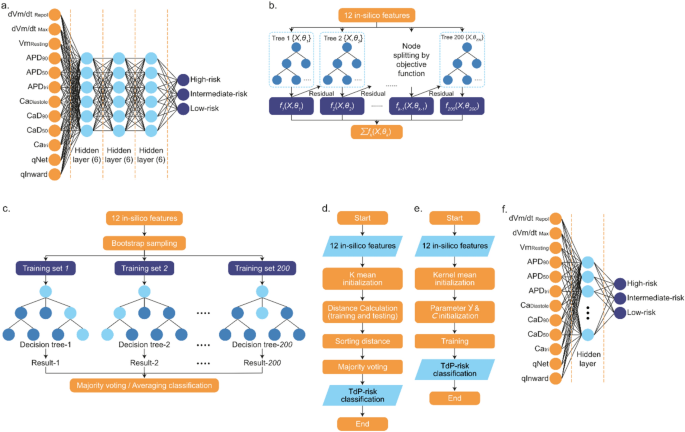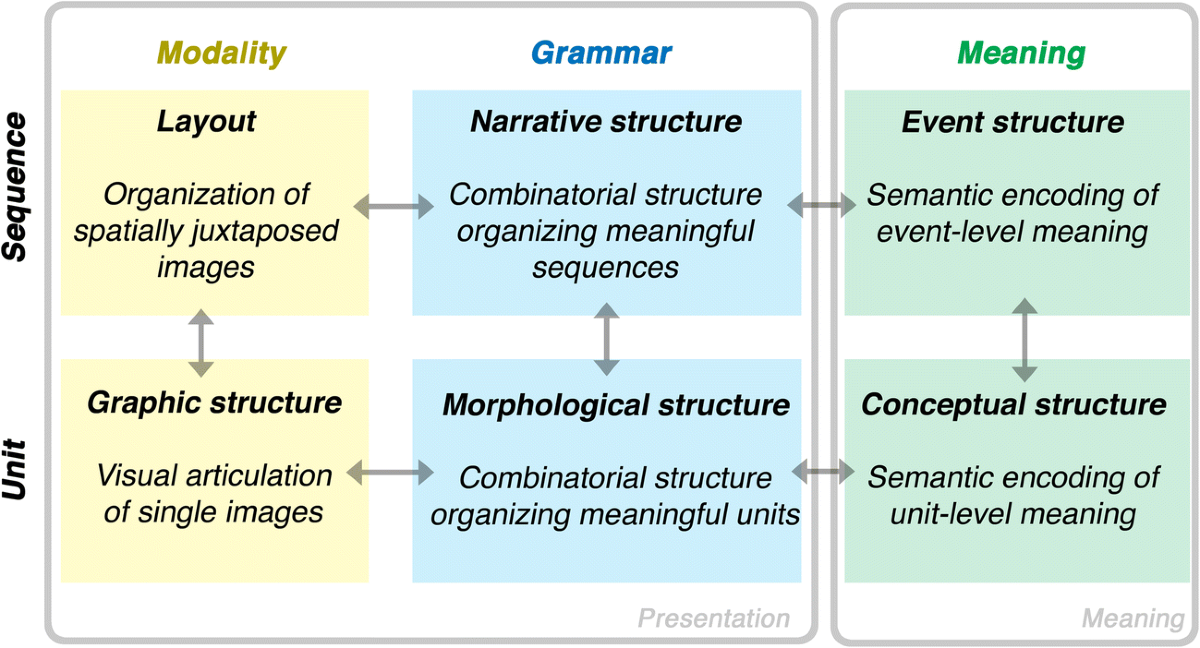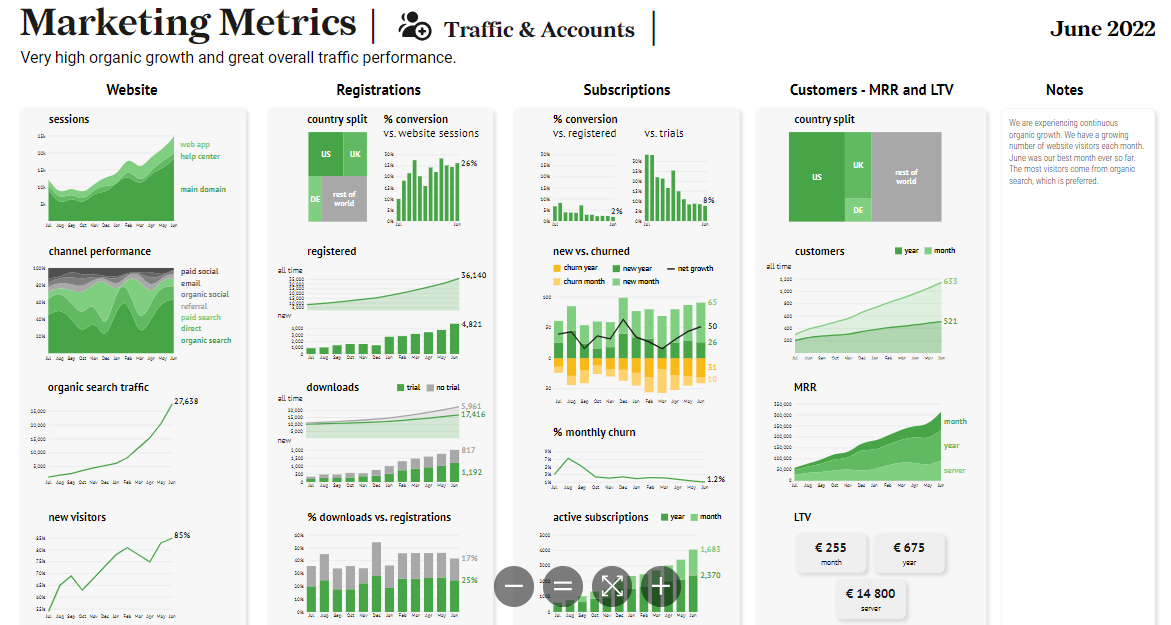Breaking Echo Chambers: Transforming Digital Narratives Through Visual Storytelling
Understanding the Digital Echo Chamber Phenomenon and How to Overcome It
I've spent years exploring how our digital world has become increasingly fragmented, creating bubbles where we only see what we already believe. In this guide, I'll share how strategic visual storytelling can build bridges across these divides, creating narratives that resonate across different worldviews and help us reconnect in our fractured information landscape.
The Digital Echo Chamber Phenomenon
I've observed that echo chambers represent one of the most significant challenges in our modern information ecosystem. These self-reinforcing information bubbles limit our exposure to diverse perspectives and create increasingly polarized worldviews. In my experience, understanding these dynamics is the first step toward breaking them down.

Visual representation of how digital echo chambers isolate users from diverse perspectives
The Psychology Behind Echo Chambers
Through my research, I've found that echo chambers form through a combination of psychological mechanisms and algorithmic design. Storytelling with data helps us understand how confirmation bias drives us to seek information that aligns with our existing beliefs, while selective exposure ensures we're rarely confronted with challenging viewpoints.
The Echo Chamber Formation Process
flowchart TD
A[Initial User Preference] --> B[Algorithm Learns Preference]
B --> C[Content Filtered to Match Preference]
C --> D[User Engagement Reinforces Filter]
D --> E[More Extreme Content Presented]
E --> F[Worldview Narrows]
F --> G[Opposition Views Seem Alien]
G --> D
style A fill:#FF8000,stroke:#333,stroke-width:1px
style G fill:#ff6666,stroke:#333,stroke-width:1px
The Digital Multiverse
I've come to view our current information landscape as a "digital multiverse" – different audience segments experience entirely different versions of reality based on their information diet. This fragmentation makes collective problem-solving increasingly difficult as we lack shared facts and narratives.
Impact of Echo Chambers on Public Discourse
Strategic Storytelling as a Bridge-Building Tool
In my years of working with diverse audiences, I've discovered that storytelling provides a uniquely powerful tool for bridging divides. Stories engage our brains differently than facts alone, activating emotional centers and creating shared experiences that can transcend ideological boundaries.

The neuroscience of narrative: How stories activate multiple brain regions simultaneously
Visual vs. Text-Based Communication
My research consistently shows that visual storytelling delivers significantly higher engagement and retention compared to text-based approaches. When creating digital marketing pitch decks, I've found that visual elements can communicate complex ideas quickly across different audience segments.
Comparative Effectiveness: Visual vs. Text Communication
The 3Rs Framework for Echo Chamber Penetration
Based on my experience with interactive content for marketing strategy, I've developed the 3Rs framework for creating narratives that can penetrate echo chambers:
flowchart TD
Start[Strategic Storytelling] --> R1[Relevance]
Start --> R2[Real-time Adaptation]
Start --> R3[Reach]
R1 --> R1A[Find shared values]
R1 --> R1B[Address universal concerns]
R1 --> R1C[Use audience-specific framing]
R2 --> R2A[Monitor engagement]
R2 --> R2B[Adjust narrative elements]
R2 --> R2C[Responsive content evolution]
R3 --> R3A[Multi-channel distribution]
R3 --> R3B[Cross-platform adaptation]
R3 --> R3C[Algorithmic optimization]
R1A & R1B & R1C --> Output1[Narrative Resonance]
R2A & R2B & R2C --> Output2[Continuous Improvement]
R3A & R3B & R3C --> Output3[Audience Penetration]
Output1 & Output2 & Output3 --> Result[Echo Chamber Breakthrough]
style Start fill:#FF8000,stroke:#333,stroke-width:1px
style Result fill:#66BB6A,stroke:#333,stroke-width:1px
style R1 fill:#FFB066,stroke:#333,stroke-width:1px
style R2 fill:#FFB066,stroke:#333,stroke-width:1px
style R3 fill:#FFB066,stroke:#333,stroke-width:1px
Case Study: TikTok's "Out of Phone" Feature
One fascinating example I've studied is TikTok's innovative "Out of Phone" feature, which extends digital content into physical spaces through out-of-home advertising. This approach creates a bridge between digital and physical worlds, helping content escape algorithmic constraints and reach new audiences who might never encounter it online.
By strategically placing content in physical environments, brands can circumvent the digital echo chamber entirely, creating unexpected touchpoints that spark curiosity and engagement from diverse audience segments.
Data Visualization: Making Complex Information Accessible
In my work with complex data sets, I've found that visualization is essential for making information accessible across different worldviews. When information is presented visually, it bypasses many of the cognitive filters that might otherwise reject it, allowing for more open consideration.

Transforming abstract concepts into compelling visual narratives increases understanding
Techniques for Cross-Viewpoint Data Presentation
When working on PowerPoint data storytelling projects, I've developed several techniques that help data resonate across different worldviews:
- Start with common ground data points that most audiences will accept
- Use value-neutral color schemes that don't trigger partisan associations
- Present multiple interpretations of the same data when appropriate
- Provide interactive elements that allow users to explore data from different angles
- Use clear, jargon-free labeling that's accessible to all education levels
Using AI Blocks for Data-Driven Storytelling
One of the tools I've found most valuable is PageOn.ai's AI Blocks feature, which allows me to structure data-driven storytelling without technical barriers. This modular approach helps me break complex information into digestible components that can be understood by diverse audiences.
AI Blocks Visualization Structure
flowchart TD
subgraph "PageOn.ai AI Blocks System"
Data[Raw Data Input] --> Processing[AI Processing Layer]
Processing --> Blocks[Modular Visualization Blocks]
Blocks --> B1[Narrative Block]
Blocks --> B2[Comparison Block]
Blocks --> B3[Trend Block]
Blocks --> B4[Relationship Block]
Blocks --> B5[Geographic Block]
B1 & B2 & B3 & B4 & B5 --> Assembly[Visual Story Assembly]
Assembly --> Output[Cross-Viewpoint Accessible Visualization]
end
style Data fill:#FF8000,stroke:#333,stroke-width:1px
style Output fill:#66BB6A,stroke:#333,stroke-width:1px
style Blocks fill:#FFB066,stroke:#333,stroke-width:1px
Interactive Visualization for Perspective-Taking
I've found that interactive visualizations are particularly effective at encouraging exploration and perspective-taking. When users can manipulate data displays to view information from different angles, they become active participants in the discovery process rather than passive recipients of a predetermined narrative.
This interactive approach creates a sense of agency and ownership that makes users more receptive to new information, even when it challenges their existing beliefs. By building YouTube Innovation Pitch Deck presentations with interactive elements, I've seen significantly higher engagement across diverse audience segments.
Multi-Channel Storytelling Architecture
In my experience, breaking through echo chambers requires a strategic multi-channel approach. By creating visual narrative ecosystems that exist beyond algorithm constraints, we can reach audiences who would never encounter our content through their typical information channels.

Visual representation of a multi-channel storytelling architecture that bypasses algorithmic constraints
Mapping the Audience Journey
A critical part of my approach involves mapping touchpoints across both digital and physical environments. This comprehensive view helps identify opportunities to intercept audiences outside their usual information bubbles.
Audience Journey Touchpoints Across Environments
flowchart TD
User[User in Echo Chamber] --> D1[Digital Touchpoint: Social Media]
User --> D2[Digital Touchpoint: News Sites]
User --> D3[Digital Touchpoint: Email]
User --> P1[Physical Touchpoint: OOH Advertising]
User --> P2[Physical Touchpoint: Events]
User --> P3[Physical Touchpoint: Retail]
D1 --> A1[Algorithm Controlled]
D2 --> A1
D3 --> A2[Partially Controllable]
P1 --> A3[Outside Algorithm Control]
P2 --> A3
P3 --> A3
A1 --> S1[Strategy: Pattern Interruption]
A1 --> S2[Strategy: Influencer Partnerships]
A2 --> S3[Strategy: Direct Messaging]
A3 --> S4[Strategy: Environmental Storytelling]
A3 --> S5[Strategy: Experiential Marketing]
S1 & S2 & S3 & S4 & S5 --> O[Omnichannel Narrative Experience]
O --> B[Echo Chamber Breakthrough]
style User fill:#FF8000,stroke:#333,stroke-width:1px
style B fill:#66BB6A,stroke:#333,stroke-width:1px
style A1 fill:#FF9A3D,stroke:#333,stroke-width:1px
style A2 fill:#FFB066,stroke:#333,stroke-width:1px
style A3 fill:#66BB6A,stroke:#333,stroke-width:1px
Using Deep Search for Diverse Visual Assets
I've found PageOn.ai's Deep Search feature invaluable for integrating diverse visual assets that speak to different audience segments. This tool helps me discover visuals that resonate with specific worldviews while maintaining narrative consistency across channels.
Strategic Content Distribution
Based on my experience with cross-platform campaigns, I've identified several key strategies for penetrating echo chambers:
| Distribution Strategy | Echo Chamber Impact | Implementation Complexity |
|---|---|---|
| Cross-bubble influencer partnerships | High | Medium |
| Out-of-home + digital retargeting | Very High | High |
| Community-specific visual adaptations | Medium | Medium |
| Contextual targeting in unexpected spaces | High | Low |
| Collaborative content with opposing viewpoints | Very High | Very High |
Measuring Cross-Chamber Engagement
One of the most challenging aspects of this work is measuring success. I've developed metrics specifically for tracking narrative penetration across different information bubbles, focusing on engagement patterns that indicate content is reaching beyond its typical audience.
Crafting Visual Narratives That Transcend Bubbles
Based on my research into polarized information environments, I've identified specific techniques for creating visual narratives that can transcend bubbles and resonate across diverse worldviews.

Visual framing techniques that avoid triggering defensive responses while maintaining narrative integrity
Universal Values as Storytelling Anchors
I've found that identifying universal values and shared concerns provides powerful anchoring points for cross-bubble storytelling. These common touchpoints create an initial foundation of agreement before introducing more nuanced or potentially divisive elements.
Universal Values Across Different Worldviews
Using Vibe Creation for Adaptive Messaging
PageOn.ai's Vibe Creation feature has been essential in my work to adapt messaging tone while maintaining core narrative integrity. This tool allows me to preserve the fundamental message while adjusting presentation to resonate with different audience segments.
Adaptive Messaging Framework
flowchart TD
Core[Core Message] --> T1[Tone Variation A]
Core --> T2[Tone Variation B]
Core --> T3[Tone Variation C]
T1 --> V1[Visual Style A]
T2 --> V2[Visual Style B]
T3 --> V3[Visual Style C]
V1 --> A1[Audience Segment A]
V2 --> A2[Audience Segment B]
V3 --> A3[Audience Segment C]
A1 & A2 & A3 --> CM[Consistent Message Retention]
style Core fill:#FF8000,stroke:#333,stroke-width:1px
style CM fill:#66BB6A,stroke:#333,stroke-width:1px
Balancing Authenticity with Strategy
One of the most challenging aspects of this work, in my experience, is maintaining authenticity while strategically adapting content for different audiences. I've found that transparency about core values, combined with genuine respect for diverse perspectives, creates the most effective foundation for cross-bubble communication.
When audiences sense manipulation or insincerity, defensive barriers immediately rise. Instead, I focus on finding genuine connections and shared concerns, then build narratives that honestly address these common grounds.
Implementation: From Strategy to Visual Execution
Moving from strategic planning to practical execution requires a systematic approach. Based on my experience implementing cross-bubble communication campaigns, I've developed a framework for translating strategy into effective visual execution.

A visual storytelling blueprint for echo chamber penetration with modular content structure
Creating a Visual Storytelling Blueprint
The first step in my implementation process is creating a comprehensive blueprint that maps narrative elements to specific audience segments and channels. This strategic planning document ensures all visual content works together toward the goal of echo chamber penetration.
Visual Storytelling Implementation Process
flowchart TD
Strategy[Strategic Intent] --> Research[Audience Research]
Research --> Insights[Insight Development]
Insights --> Core[Core Narrative Creation]
Core --> Mod[Modular Content Structure]
Mod --> A[Channel-Specific Adaptations]
A --> Test[Testing & Optimization]
Test --> Dist[Multi-Channel Distribution]
Dist --> Measure[Impact Measurement]
Measure --> Refine[Continuous Refinement]
style Strategy fill:#FF8000,stroke:#333,stroke-width:1px
style Refine fill:#66BB6A,stroke:#333,stroke-width:1px
Building Modular Content Structures
In my approach, I focus on creating modular content structures that can adapt to different platforms and audiences while maintaining narrative coherence. This flexibility is essential for reaching diverse audience segments without diluting the core message.
Using PageOn.ai's Agentic Capabilities
One of the most powerful tools in my implementation toolkit is PageOn.ai's agentic capabilities, which transform strategic intent into tailored visual narratives. This AI-powered approach allows for rapid creation of customized content variations that maintain brand consistency while resonating with different audience segments.
By leveraging these capabilities, I can efficiently scale personalized visual storytelling across multiple channels and audience segments, making echo chamber penetration practical even with limited resources.
Case Study: Cross-Bubble Brand Campaign
A particularly successful implementation I've observed was a major consumer brand's campaign that effectively transcended digital divides. By identifying universal emotional triggers related to family connections, the campaign created visual stories that resonated across typically polarized audience segments.
The campaign used a modular approach with a consistent core narrative but adapted visual styling, spokesperson selection, and distribution channels based on audience segment. Measurement showed significant message penetration across typically isolated information bubbles, with engagement from users who rarely interacted with the brand's content previously.
Measuring Impact and Refining Approach
In my work breaking through echo chambers, I've found that measurement is critical but challenging. Traditional engagement metrics often reinforce rather than challenge bubble dynamics, so I've developed specialized approaches for measuring cross-bubble impact.

Visualizing audience overlap and narrative crossover using advanced analytics
Key Performance Indicators
Based on my experience, these are the most effective KPIs for measuring echo chamber penetration:
- Audience Overlap Growth: Increase in shared audience between previously isolated content clusters
- Cross-Perspective Engagement: Meaningful interactions from users with typically opposing viewpoints
- Sentiment Diversity: Range of sentiment within engagement metrics (avoiding purely polarized responses)
- Message Consistency Testing: Research measuring consistent message understanding across different audience segments
- Algorithmic Diversity Index: Tracking content performance across algorithmically diverse recommendation environments
Creating Feedback Loops
I've found that establishing continuous feedback loops is essential for narrative optimization. By monitoring performance across different audience segments in real-time, I can identify which elements are succeeding in bridging divides and which need refinement.
Narrative Optimization Feedback Loop
flowchart TD
Deploy[Deploy Visual Narrative] --> Collect[Collect Cross-Segment Data]
Collect --> Analyze[Analyze Engagement Patterns]
Analyze --> Identify[Identify Bridging Elements]
Identify --> Adapt[Adapt Narrative Components]
Adapt --> Test[Test New Variations]
Test --> Deploy
style Deploy fill:#FF8000,stroke:#333,stroke-width:1px
style Adapt fill:#66BB6A,stroke:#333,stroke-width:1px
Using PageOn.ai for Rapid Prototyping
One of the most valuable tools in my refinement process is PageOn.ai's rapid prototyping capabilities. This platform allows me to quickly test different visual storytelling approaches with diverse audience segments, gathering data on what resonates across different worldviews.
The ability to rapidly iterate based on real-world feedback is essential for developing effective cross-bubble communication strategies. What works in theory often needs adjustment when deployed in the complex reality of our fragmented information landscape.
Ethical Considerations
In all my work breaking through echo chambers, I maintain a strong focus on ethical considerations. The goal is not manipulation but rather creating opportunities for genuine connection and understanding across divides. I balance persuasion techniques with respect for audience autonomy and transparency about intent.
When done ethically, breaking through echo chambers can help rebuild shared understanding and facilitate more constructive public discourse – outcomes that benefit both brands and society as a whole.
Transform Your Visual Expressions with PageOn.ai
Ready to break through digital echo chambers with powerful visual storytelling? PageOn.ai provides the tools you need to create compelling narratives that resonate across diverse audiences and worldviews.
Start Creating with PageOn.ai TodayConclusion: Building Bridges Through Visual Storytelling
Throughout my exploration of digital echo chambers and strategic storytelling, I've discovered that visual narratives offer unique power to bridge divides in our fragmented information landscape. By combining the science of narrative with the art of visual communication, we can create content that transcends algorithmic boundaries and connects with diverse audiences.
The challenges are significant, but the tools and strategies I've outlined provide a practical framework for breaking through echo chambers. From the 3Rs framework to multi-channel architecture, from data visualization to modular content structures, these approaches offer concrete ways to create more inclusive and effective communication.
As our information landscape continues to fragment, the ability to create visual stories that bridge divides will become increasingly valuable. With platforms like PageOn.ai making sophisticated visual storytelling accessible to more communicators, I'm optimistic about our ability to rebuild shared understanding and more productive public discourse.
I encourage you to experiment with these approaches in your own communication strategy, adapting them to your unique context and audience. The future of effective communication lies in our ability to transcend bubbles and connect through powerful visual narratives that speak to our shared humanity.
You Might Also Like
Strategic AI Marketing Investment Roadmap: Maximizing ROI from the $360 Billion Surge | 2025 Marketing Tech Budget Guide
Navigate the $360 billion AI investment surge with strategic marketing technology budget allocation. Discover proven frameworks for maximizing ROI from AI marketing tools in 2025.
First Principles Framework for Building Powerful AI Commands | Master AI Prompt Engineering
Learn the first principles approach to crafting powerful AI commands. Master prompt engineering with proven frameworks, templates, and visualization techniques for optimal AI interaction.
Visualizing the AI Revolution: From AlphaGo to AGI Through Key Visual Milestones
Explore the visual journey of AI evolution from AlphaGo to AGI through compelling timelines, infographics and interactive visualizations that map key breakthroughs in artificial intelligence.
Prompt Chaining Techniques That Scale Your Business Intelligence | Advanced AI Strategies
Master prompt chaining techniques to transform complex business intelligence workflows into scalable, automated insights. Learn strategic AI methodologies for data analysis.
